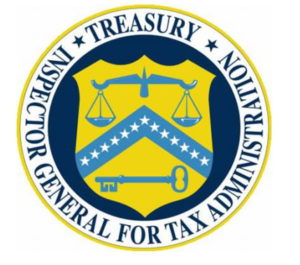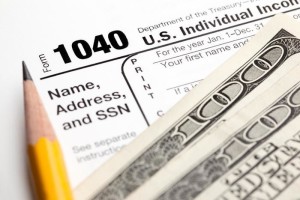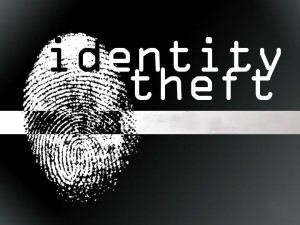CFEG Report on Taxpayers Avoiding Billions of Dollars in Backup Withholding Because of the Lack of IRS Enforcement
Wednesday, February 8th, 2017 @ 8:28PM
CFEG reports that the Treasury Inspector For Tax Administration (TIGTA) issued a report on September 14, 2016 (released to the public on October 26, 2016) finding that taxpayers are avoiding $billions of dollars in backup withholding because of the lack of IRS enforcement. CFEG views this lack of enforcement as a form of neglect or waste because enforcement of backup withholding requirements is essential to help ensure that taxes are paid. You may review the full report by clicking the link below.
Purpose of Backup Withholding
The purpose of backup withholding is to make sure that the Government is able to collect taxes on all appropriate income, particularly income that is not usually subject to withholding. In September 2015, TIGTA issued a report that identified deficiencies with backup withholding and other reporting requirements related to payment cards. TIGTA’s audit released October 26, 2016 continues an assessment of the IRS’s actions to ensure compliance with backup withholding provisions.
TIGTA’s Findings that Billions of Dollars Are Not Being Withheld By Payors
TIGTA found in its report that, although payers submitted the majority of information returns with valid Taxpayer Identification Numbers (TINs), they did not withhold nearly $9 billion in backup withholding tax when they submitted Tax Year (TY) 2013 information returns with missing or incorrect TINs. TIGTA also identified 13,647 payers who submitted 27,576 information returns with the same missing payee TIN for two years in a row (TYs 2012 and 2013). These returns reported payments of about $14.3 billion. Payers were required to immediately withhold nearly $4 billion from these payees, but just more than $1 million was withheld.
In addition, TIGTA identified 62,714 payers who submitted 203,751 information returns for which the payee TIN was incorrect in four consecutive years. These returns reported payments totaling nearly $17 billion, and payers were required to withhold nearly $5 billion from these payees, but only $1 million was withheld.
TIGTA also found that there is no justification for criteria used to exclude payers from receiving backup withholding notices that include missing or incorrect TINs. For example, the IRS notified payers of the missing or incorrect TINs associated with only 10.8 million (57 percent) returns of the 18.9 million that were identified. Finally, TIGTA’s review of TY 2013 information returns identified 2.3 million returns were submitted for 1.6 million individuals with reportable payments totaling more than $4 billion for which the payee TIN was that of a deceased individual.
“While the legal requirements for backup withholding have been in effect for over 30 years, a substantial amount of tax is not being withheld as required,” said J. Russell George, the Treasury Inspector General for Tax Administration. “The IRS’s enforcement of backup withholding requirements is essential to help ensure that taxes are paid,” he added.
CFEG FOIA to IRS
CFEG also reports that in response to a recent a Freedom of Information Act (FOIA) request it sent to the IRS on November 8, 2016, the IRS produced documents pertaining to the data on the number of 1099s which were filed by payors that contained missing TINs (taxpayer identification numbers, invalid SSNs (Social Security Numbers), unmatchable EINs (Employer Identification Numbers) and non-numeric 1099s. CFEG has provided pertinent documents produced by the IRS for review in this report. The data may be found by clicking the link below.
Types of 1099s
There are seven different types of 1099 forms that are filed with the IRS. There is the 1099-INT form which is used by payors to report interest income. There is a 1099-MISC form which is for miscellaneous income. There is a 1099-DIV form used to report dividend income and distributions. There is a 1099-PATR form used to report distributions received from cooperatives. There is a 1099-K used to report payment card and third party network transactions. There is a 1099-B form used to report proceeds from Brokers and Barter Exchange transactions. There is a 1099-OID form (Original Issue Discount) which is used when you purchase a bond or note for an amount less than face value. The OID is the difference between the bond’s stated redemption price (usually its face value) and its issue price (generally the amount the bond or note was first sold by the issuer).
A congressional study focusing on income and Social Security tax compliance in the fall of 1978, identified three areas of concern: 1.) failure of payors to file Forms 1099; 2.) incorrect Taxpayer Identification Numbers (TIN) being used for identification; and 3.) non-reporting of income by independent contractors. The Tax Equity and Fiscal Responsibilities Act of 1982 (TEFRA) and the Interest and Dividend Tax Compliance Act of 1983 enacted provisions to combat these failures. The backup withholding provisions of IRC § 3406 was one of the remedies. This section requires payors to deduct withholding taxes from certain reportable payments.
Form 945, Annual Return of Withheld Federal Income Tax, is used to report income tax withheld from certain reportable, non-payroll payments, which include, but are not limited to, non-employee compensation, pensions and annuities, IRA distributions, gambling winnings, and Indian gaming per capita payments. The return is filed on an annual basis and is due by the last day of the month following the end of the year, generally January 31.
IRC § 3406(a)(1) requires that, in the case of any reportable payment, the payor shall deduct and withhold from such payment a tax equal to a product of the fourth lowest rate of tax applicable under IRC § 1(c), if: 1.) the payee fails to furnish his/her taxpayer identification number (TIN) to the payor in the manner required; 2.) the Secretary notifies the payor that the TIN furnished by the payee is incorrect; 3.) there has been a notified payee underreporting; or 4.) there has been a payee certification failure. Items 3 and 4 apply only to “reportable interest or dividends” as defined in IRC § 3406(b)(2).
In general, reportable payments as described in IRC § 6041 and § 6041A(a), such as rent, commissions and non-employee compensation, aggregating $600 or more in a calendar year are subject to backup withholding. Treas. Reg. § 31.3406(b)(3)-1(b)(3)(i) clarifies the amount subject to withholding as: 1.) the entire payment that causes the total amount of each reportable kind to the payee during the calendar year to equal $600 or more, plus 2.) the amount of additional payments to that payee subject to reporting IRC § 3406(e) addresses the period(s) for which withholding is required in the four situations which trigger backup withholding: 1.) the payee fails to furnish his taxpayer identification number (TIN) to the payor in the manner required; 2.) the Service notifies the payor that the TIN furnished by the payee is incorrect, first and 2nd notices; 3.) there has been a notified payee underreporting: or 4.) there has been a payee certification failure. Paragraphs 3 and 4 apply only to interest and dividends.
Data on the Number of Missing TINs, Incorrect TINs and Unmatchable TINs
In 2016, as of April 20, 2016, with respect to the 1099-INT form there were 34,056 missing TINs, 25,606 incorrect TINs and 386,541 where the name was incorrect and did not match the TIN.
In 2016, as of April 20, 2016, with respect to the 1099-DIV form there were 16,452 missing TINs, 47,459 incorrect TINs and 261,803 where the name was incorrect and did not match the TIN.
In 2016, as of April 20, 2016, with respect to the 1099-OID form there were 5,757 missing TINs, 447 incorrect TINs and 10,448 where the name was incorrect and did not match the TIN.
In 2016, as of April 20, 2016, with respect to the 1099-PATR form there were 1,320 missing TINs, 878 incorrect TINs and 9,557 where the name was incorrect and did not match the TIN.
In 2016, as of April 20, 2016, with respect to the 1099-B form there were 269,255 missing TINs, 116,220 incorrect TINs and 4,308,678 where the name was incorrect and did not match the TIN.
In 2016, as of April 20, 2016, with respect to the 1099-MISC form there were 241,415 missing TINs, 200,122 incorrect TINs and 2,418,320 where the name was incorrect and did not match the TIN.
In 2016, as of April 20, 2016, with respect to the 1099-K form there were 7,567 missing TINs, 17,108 incorrect TINs and 266,681 where the name was incorrect and did not match the TIN.
In 2014 there were 1,771,047,047 1099s issued. Of that total there were 701,662 invalid SSNs, 11,045,816 unmatchable EINs, and 2,476,698 non-numeric 1099s. In 2013 there were 1,447,859,143 1099s issued. Of that total there were 763,410 invalid SSNs, 13,959,950 unmatchable EINs, and 3,866,772 non-numeric 1099s. In 2012 there were 1,294,528,346 1099s issued. Of that total there were 756,025 invalid SSNs, 12,635,821 unmatchable EINs, and 3,147,692 non-numeric 1099s.
Conclusion
Backup withholding has been in effect for over 30 years. A substantial amount of tax is not being withheld as required by law. The IRS’s enforcement of backup withholding requirements is essential to help ensure that taxes are paid.
Posted by cfegov
Categories: Fraud, Waste and Abuse












